If you are getting “Your computer is low on memory” error message, it means some process is using more memory and other programs are facing memory shortage.
If you don’t fix this problem, your computer may freeze or some application may crash and give out an error.
Getting this memory related error does not mean you need to add more RAM to your computer. Many times the error occurs due to a memory leak. It is also possible that some program in your computer is causing the problem.
Sometimes the low memory error message may also ask the user to close a certain app that is utilising too much memory. If you don’t follow the instructions, your computer may crash.
Here we have provided some solutions that might resolve the “Your computer is low on memory” error.
You can start with the first solution, and if it does not work, move to the next solution and so on. Let’s look at the solutions.
Solution One- Find out the program that is using more memory and kill its process
You need to find the app that is hogging more memory and kill its process. You can find the culprit program in the Task Manager. Here are the steps to follow.
- On the keyboard, press Shift and Ctrl keys at the same time and continue holding them and then press Esc key to invoke Task Manager window
- In the Task Manager window, go to Processes tab
- In our case, the process that appears on the top is using more memory and the process belongs to Firefox app. In your case, it can be any other app/process.
- Right-click on the process and select End task
- Close Task Manager window
Check whether you are getting “Your computer is low on memory” error message. If you are still getting the error and see the same app/process is hogging more memory, update the app and see if it resolves the issue. If this solution has not worked for you, move to next solution.
Solution Two – Increase Paging File size (virtual memory)
Your Windows computer uses two types of memory – Physical Memory and Virtual Memory which is also referred as paging file. The virtual memory serves an important purpose. It is used by Windows to store infrequently accessed modified pages so that they can be removed from Physical Memory. The result is the computer is able to free memory for other programs.
The Paging file size is set during installation of Windows and the recommended size depends on the Windows system architecture (32-bit or 64-bit) and amount of RAM installed in your computer. You can increase the paging file size to enhance performance of Windows. Here are the steps to follow.
- On the keyboard, Hold down Windows logo key and X together to invoke quick access black colored menu
- In the quick access menu- click System
- In the System window, look for Advanced System settings in left-hand column and click on it
- In the System Properties window, go to Advanced tab
- Under Performance, click on Settings
- In the Performance Options window, go to Advanced tab
- Under Virtual Memory, click on Change button
- Uncheck the box – Automatically manage paging file size for all drives
- Click on Custom Size
- Set Initial Size and Maximum size in right manner. Follow the instruction below when deciding values for Initial Size and Maximum size.
Note – Type any value greater than recommended values shown below. One general rule to follow is the size of paging file can be greater than 1GB but lesser than 4GB.
- After entering values in Initial size and Maximum size boxes, click Set
- Click OK
- Close all Windows
Now check whether you are getting “Your computer is low on memory” error message. If the low memory problem still persists, move to next solution.
Solution Three- Update Windows
It is always a good habit to install all recommended Windows updates to keep your Windows running smoothly. From time to time, Microsoft releases updates to plug-in known vulnerabilities and bugs.
There is a possibility this problem is being caused by some bug in the operating system and installing updates might help resolve the problem once and for all.
Here are the steps to follow.
- Click Start
- Click Settings(gear icon)
- Click Update and Security -> Windows Update
- Click Check for updates
- Windows OS will now check for latest updates, download them and install the updates automatically. After Windows updates are installed, restart your PC.
You should be able to resolve the problem by now.
Check if you are still receiving “Your computer is low on memory” error message. If the problem persists, you can consider adding more RAM to your computer which would resolve the low memory issue.

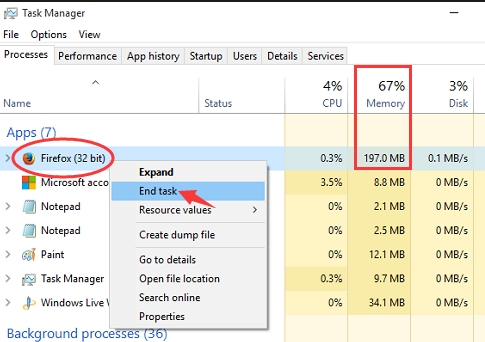
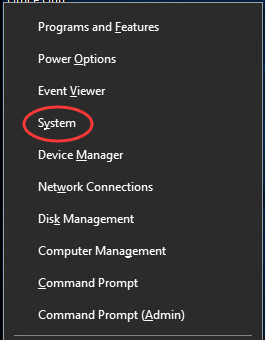
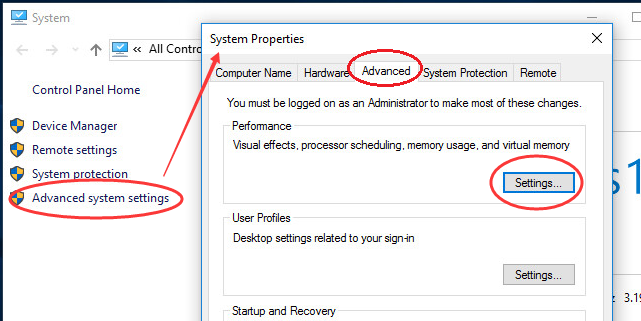
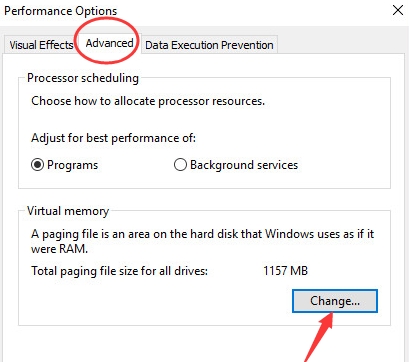
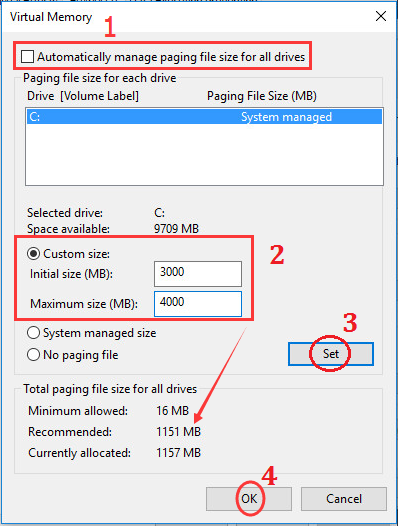
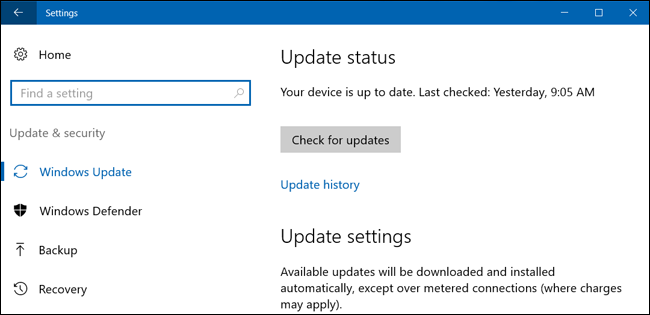
Leave a Reply